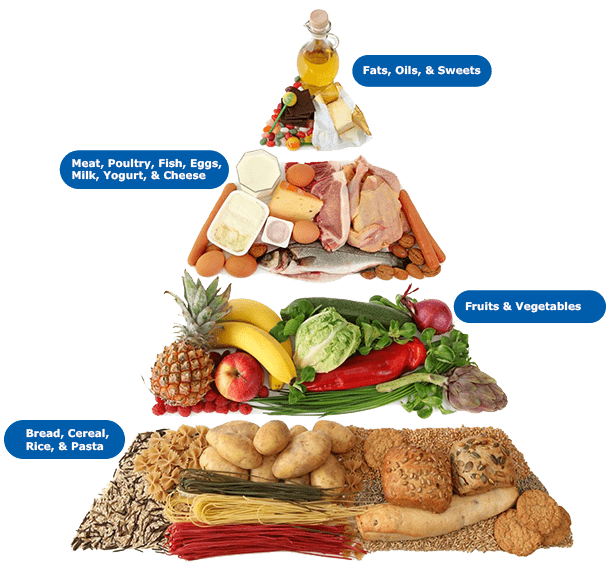Foods for Diabetics

Nutrition
One of the most important ways to manage diabetes is by eating the right foods in the right amounts. Everyone with diabetes should have a meal
plan. Knowing how much to eat, what to eat, and when to eat is also important. Your doctor, dietitian or certified diabetes educator can help you
develop a meal plan that works for you.
Some guidelines to eating healthy are:
• Plan your meals
• Do not skip meals
• Eat when you are hungry and stop when you are satisfied
• Eat meals and snacks at regular times every day
• Eat three balanced meals a day plus snacks, spread them out during the day
• Eat a variety of foods
• Add color to meals with fresh fruits and vegetables
• Enjoy plenty of whole grains
• Make sure you get enough fiber every day
• Watch portion sizes
• Slow down and enjoy the flavor of each bite of food
The three major nutrients in food are:
• Carbohydrates
• Proteins
• Fats

Carbohydrates
Carbohydrates are the body’s main energy source. The majority of the carbohydrates we eat are in the form of starch or sugar. Carbohydrates
increase blood sugar the most. Almost 100% of carbohydrates are absorbed as sugar or glucose. On average, 50% of calories each day come
from carbohydrates. Carbohydrates are measured in grams. All types of carbohydrates have the same effect on blood sugar levels.

Protein
Protein is broken down into amino acids. Amino acids are used to repair and replace body tissues. Protein has much less effect on your blood
glucose levels than carbohydrates. It does not easily turn into glucose. Protein is mainly found in meat, fish, poultry, eggs, cheese, milk, nuts,
and dried beans. It is recommended that you eat 2-3 servings per day. Select lean meats such as chicken (white meat, without skin), low fat or
fat free cheese, and beans.
Fats
There are two types of fats, healthy fat and unhealthy fat. Healthy fats are monounsaturated, polyunsaturated, and omega-3 fats. Unhealthy fats
are saturated and trans fat. To lower your risk of heart disease, eat less of the unhealthy fats. All fats are high in calories so it is important to eat
the correct portion sizes. Cut back on saturated and trans fats, substitute them with the healthy fats. Instead of 1 cheese stick for an afternoon
snack, have 12 almonds. The change will help in keeping a healthy heart.
Unhealthy Fats
Saturated fat increases blood cholesterol levels. High blood cholesterol is a risk factor for heart disease. People with diabetes are at high risk for
heart disease, by lowering your saturated fat intake you can lower your risk of having a heart attack or stroke.
Saturated fat foods include high-fat dairy products such as; full-fat cheese, cream, ice cream, whole milk and 2%, and our cream. High-fat meats
include regular ground beef, bologna, hot dogs, sausage, bacon, poultry with skin, and spare ribs.
Trans fat increases blood cholesterol levels. It is actually unhealthier than saturated fat. For a heart-healthy diet; you want to eat as little trans fat
as possible by avoiding all foods that contain it. Trans fats are listed on the label, making it easier to identify these foods. Unless there is at least
0.5 grams or more of trans fat in a food, the label can claim 0 grams. If you want to avoid as much trans fat as possible, you must read the
ingredient list on food labels.
Trans fat foods include:
• Processed foods
• Snacks (crackers and chips)
• Baked goods (muffins, cookies and cakes) with hydrogenated oil or partially hydrogenated oil
• Stick margarines
• Shortening
• Some fast food items such as french fries
Another unhealthy fat is cholesterol. The body naturally makes some cholesterol in your blood. The rest comes from the consumption of some
foods. Foods from animals are mainly sources of dietary cholesterol. Cholesterol that comes from the foods you eat may increase blood cholesterol,
it is recommended to eat less than 200 mg per day. Cholesterol is required on food labels. Foods that contain cholesterol include high-fat dairy
products, egg yolks, liver and other organ meats, and high fat meat and poultry skin.
Healthy Fats
Monounsaturated fats are called “good or healthy” fats because they can lower your bad (LDL) cholesterol. Foods that contain monounsaturated
fat include avocado, canola oil, nuts, olives, and peanut butter.
Polyunsaturated fats are also “healthy” fats. ADA recommends that you include these in your diet as well as monounsaturated fats. Some sources
of polyunsaturated fats come from oils such as a corn, cottonseed, soybean and sunflower oils. Walnuts and salad dressing are also sources of
polyunsaturated fats.
Omega-3 fatty acids help prevent clogging of the arteries. Some types of fish that are high in omega-3 fatty acid are albacore tuna, herring, mackerel,
rainbow trout, and salmon. Some plant foods are also sources of omega-3 fatty acids for example tofu, walnuts, and canola oil. The ADA recommends
eating non-fried fish 2 or 3 times a week.
NOTE: The Food & Drug Administration and the Environmental Protection Agency have issued a joint consumer advisory about mercury in fish and
shellfish. This advice is for women who might become pregnant; women who are pregnant; nursing mothers; and young children. Your fish and
shellfish consumption should be limited to no more than 12 oz. per week.